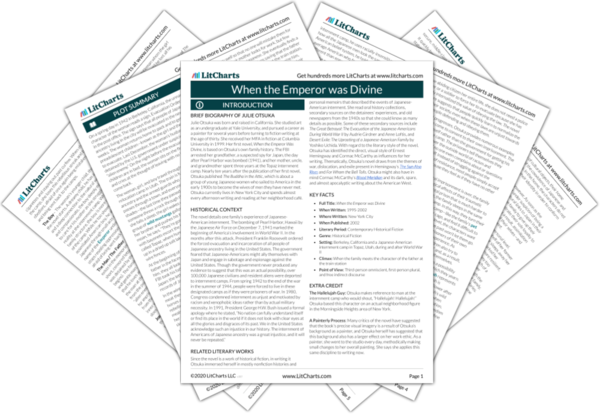Stains
Stains are the presiding symbolic image throughout the first chapter of the novel. The first stain appears on Joe Lundy’s cash register. As Lundy and the woman talk indirectly about the imminent evacuation, he…
read analysis of StainsWild and Domesticated Animals
In a novel deeply concerned with what it means to be free, animals represent the various forms of incarceration. The first animal we see is White Dog, a completely domesticated animal that relies completely on…
read analysis of Wild and Domesticated AnimalsThe Japanese Emperor
Appearing in the title of the book, Emperor Hirohito plays a crucial symbolic role for the boy. In the Japanese culture of the time, the Emperor was considered divine like a god. However, at…
read analysis of The Japanese EmperorTrees
In a novel rife with symbols, trees are perhaps the most recurring one. On the most basic level, trees represent home, one’s roots in the ground. On the evening before the family is relocated, the…
read analysis of TreesThe Rosebush
The woman’s rosebush, the principal symbol in the novel’s second to last chapter, represents the ideal of freedom. While the family was interned at the Topaz camp, the rosebush was stolen from the woman’s…
read analysis of The Rosebush












